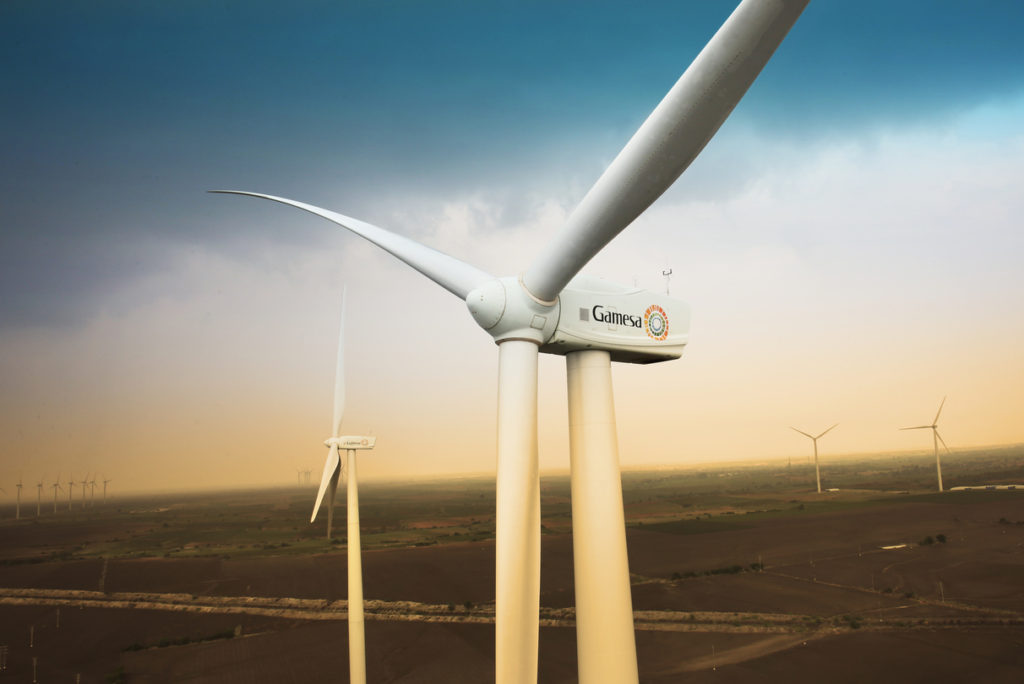Siemens Gamesa has set a new record in Asia by installing this year the tallest wind turbines on the continent. The turbines are equipped with 153-metre tall towers, and with the 56-metre blades, they reach a total height of 210 metres. The project-owned by Thai engineering company Gunkul and being built by developer PowerChina ZhongNan– has a total capacity of 67.5 MW; i.e. 33 units of the G114-2.0 and G114-2.1 MW models.
Siemens Gamesa has already installed these 33 turbines in the Sarahnlom wind farm in the Nakhon Ratchasima province in central Thailand, while commissioning is scheduled for this year. The company will also be in charge of the plant’s operation and maintenance for the next 10 years. “This milestone showcases the company’s R&D prowess,” said Álvaro Bilbao, CEO of Siemens Gamesa for Asia-Pacific. “We are demonstrating once again our ability to respond to what the market needs and the versatility of our turbines”, he added. In addition to Thailand, Siemens Gamesa’s Asian footprint includes Vietnam, Philippines, Taiwan, South Korea, Japan, Pakistan, Sri Lanka, China, and India, having installed more than 11,000 MW in these markets.
Recently Siemens Gamesa Renewable Energy also released its third-quarter of fiscal year 2017 results (from April to June 2017). During this period, the company has accelerated its integration programme. The announced synergies of €230 million are now the ‘minimum’ and the company expects to realize these synergies in year 3, one year earlier than previously announced. Markus Tacke, CEO of Siemens Gamesa, said: “We are highly satisfied with the progress to date in integrating the two companies. Things are progressing at a rapid rate: our company is ready to compete and lead in a growing and challenging market.”
Regarding the financial performance, in the third quarter of fiscal year 2017, Siemens Gamesa Renewable Energy’s revenues amounted to €2,693 million, down 7% year-on-year, while underlying EBIT came to €211 million (-21%) with the margin at 7.8%. These results were impacted by specific onshore market conditions, including the temporary suspension of the Indian market. Stripping the impact of India, revenues were up 1.6% with a strong 8.6% growth in underlying EBIT margin. In the third quarter, revenue from the sale of wind turbines decreased by 9% to €2,393 million, reflecting lower sales volumes of 1,950 MW (-25%), as a result of temporary market conditions in the onshore business, as well as normal business volatility in the offshore market. In India, the market shut down pending a revamp of the auction system, which is expecting to normalise by the first quarter of the fiscal year 2018.
Overall, the company expects an improvement in the renewable energy sector: demand prospects remain positive, emerging markets continue to play a particularly important role and the renewal of auctions is reactivating mature markets, for example, Southern Europe, and activating new markets such as Argentina and Russia. Excluding China, the global market demand for installations is expected to increase by 8% from 36 GW in 2017 to 45 GW in 2020.
Siemens Gamesa continues to lead the offshore segment having installed 10 GW, nearly 70% of the global offshore fleet, and anticipates strong growth of more than 24% annually in offshore installations until 2020. The medium term prospects remain positive with an agreement reached this quarter with Dong for the construction of the Borssele 1 and 2 wind farms, involving 94 turbines (756 MW) to be commissioned by the end of 2020.
The operations and maintenance (O&M) service revenue expanded by 8% to €300 million with an underlying margin of 16.7%. The fleet under maintenance continued to grow, reaching 54 GW worldwide (+13%). In this specific market context, Siemens Gamesa obtained €135 million of underlying net profit between April and June, equivalent to €0.2 per share. Underlying EBIT declined 21% to €211 million while the underlying EBIT margin was constant at 7.8%. These figures were also impacted by the disruption in business activity in India which is expected to normalise by the first quarter of the fiscal year 2018. The company continues to strengthen its balance sheet and ended the quarter with a net cash position of €236 million.
Presently. a major focus for the company is the integration of the two entities of Siemens and Gamesa. The integration process has the focus of realising the company’s substantial potential, thanks to its bigger scale and global reach: a presence in more than 90 countries, an installed base of 75 gigawatts, and a strong order book of €21 billion. Markus Tacke, CEO of Siemens Gamesa, stressed that the company boasts “a very strong global presence, underpinned by solid relationships with customers around the world, a global supply chain, and a broad manufacturing footprint. We have some of the most reliable and efficient products in the industry”.
Image: Courtesy of Siemens Gamesa Renewable Energy
